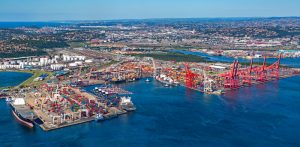The latest Industrial Policy Action Plan (IPAP) has slated current public procurement for “not delivering adequately on either value-for-money or key industrial objectives.”
The plan calls for a reform of public procurement legislation, regulation and practices that result in “ad hoc” rather than strategic purchases.
It details how the Government’s R846-billion infrastructure spend over the next three years will be used to benefit the economy.
Under its reforms, procuring bodies will be designated large, strategic or repeat procurement projects. These organisations will be expected to work with the Department for Trade and Industry (DTI) to ensure that tenders support increased local purchasing and supplier development requirements.
Other measures include boosting Broad Based Black Economic Empowerment (BBBEE) by ensuring that only suppliers of domestically produced goods will earn preference points according to their BBBEE status.
Furthermore, domestic production and supplier development requirements will be built into tenders with more than US$10-million (R78-million) of imported content.
The strategic procurement fleets already identified by Government where procurement will be used to support the economy include freight, commuter rail and buses procured by Transnet and the Passenger Rail Agency of South Africa (PRASA), key elements of Eskom’s coal-fired and nuclear electricity building programmes and pharmaceuticals procured by the Department of Health such as anti-retrovirals.
The current process of amending the regulations of the Preferential Procurement Policy Framework Act (PPPFA) will be fast-tracked to give effect to the Nedlac Crisis Response Framework, which identifies procurement of domestically produced goods and services as central to the economic crisis response.
The first IPAP, released in August 2007 “reflected chiefly easy-to-do actions” and has largely been implemented.
However, there is growing recognition that industrial policy needs to be scaled up to “what we need-to-do”.
Healthy economic growth rates of 2005 – 2007 masked key structural challenges in the South African economy. Growth has been partly driven by “unsustainable increases in credit extension, and not growth in the production sectors of the economy.”
The IPAP2 forms part of a series of interrelated policies and strategies aiming to generate a new growth path that is more labour intensive and value-adding.






















